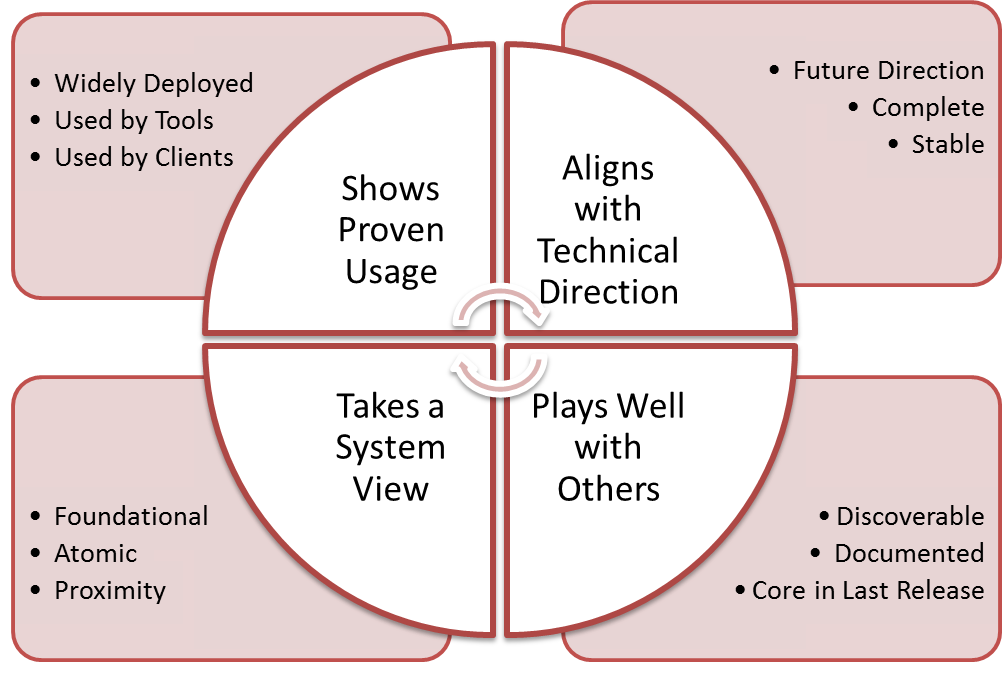3.7 KiB
Core Criteria
General
This is a subcomponent of the larger Core Definition documentation.
Core Capability Selection uses 12 criteria grouped into four primary categories:
- Usage
-
the capability is widely used (Refstack will collect data)
- Direction
-
the capability advances OpenStack technically
- Community
-
the capability builds the OpenStack community experience
- System
-
the capability integrates with other parts of OpenStack
These categories summarize critical values that we want in OpenStack and so make sense to be the primary factors used when we select DefCore capabilities. While we strive to make the DefCore process objective and quantitive, we must recognize that these choices drive community behavior.

Details
With this perspective, here are the selection criteria.
To make cross reference easier, criteria are given a shortened name.
SHOWS PROVEN USAGE
- "Widely Deployed" Candidates are widely deployed capabilities. We favor capabilities that are supported by multiple public cloud providers and private cloud products.
- "Used by Tools" Candidates are widely used capabilities: Should be included if supported by common tools outside of the OpenStack community (RightScale, Scalr, CloudForms, jClouds, Fog, etc...).
- "Used by Clients" Candidates are widely used capabilities: Should be included if called by common OpenStack clients (openstackclient, neutronclient, novaclient, etc) if necessary. This Criteria pertains mostly to API versioning. For example: if v2 of a given API is not used by other OpenStack clients but v1 is, then v2 doesn't achieve the "used by clients" Criteria.
ALIGNS WITH TECHNICAL DIRECTION
- "Future Direction" Should reflect future technical direction (from the project technical teams and the TC) and help manage deprecated capabilities.
- "Stable" Capabilities are required to be stable for >2 releases because we do not want DefCore capabilities that do not have dependable APIs.
- "Complete" Where the code being tested has a designated area of alternate implementation (extension framework) as per the DefCore Principles, there should be parity in capability tested across extension implementations. This also implies that the capability test is not configuration specific or locked to non-open technology.
PLAYS WELL WITH OTHERS
- "Discoverable" Capability being tested is Service Discoverable (can be found in Keystone and via service introspection).
- "Doc'd" Should be well documented, particularly the expected behavior. This can be a very subjective measure and we expect to refine this definition over time.
- "DefCore in Last Release" A required capability should stay a required capability. This makes DefCore capabilities sticky per release. Leaving DefCore is disruptive to the ecosystem.
TAKES A SYSTEM VIEW
- "Foundation" Capabilities that are required by other required capabilities and/or depended on by many other capabilities.
- "Atomic" Capability is unique and cannot be built out of other required capabilities.
- "Proximity" (sometimes called a Capability Cluster) selects for capabilities that are related to DefCore capabilities. This helps ensure that related capabilities are managed together.
NON-ADMIN
The original 13th "non-admin" criteria has been removed because Admin APIs cannot be used for interoperability and are not considered DefCore.